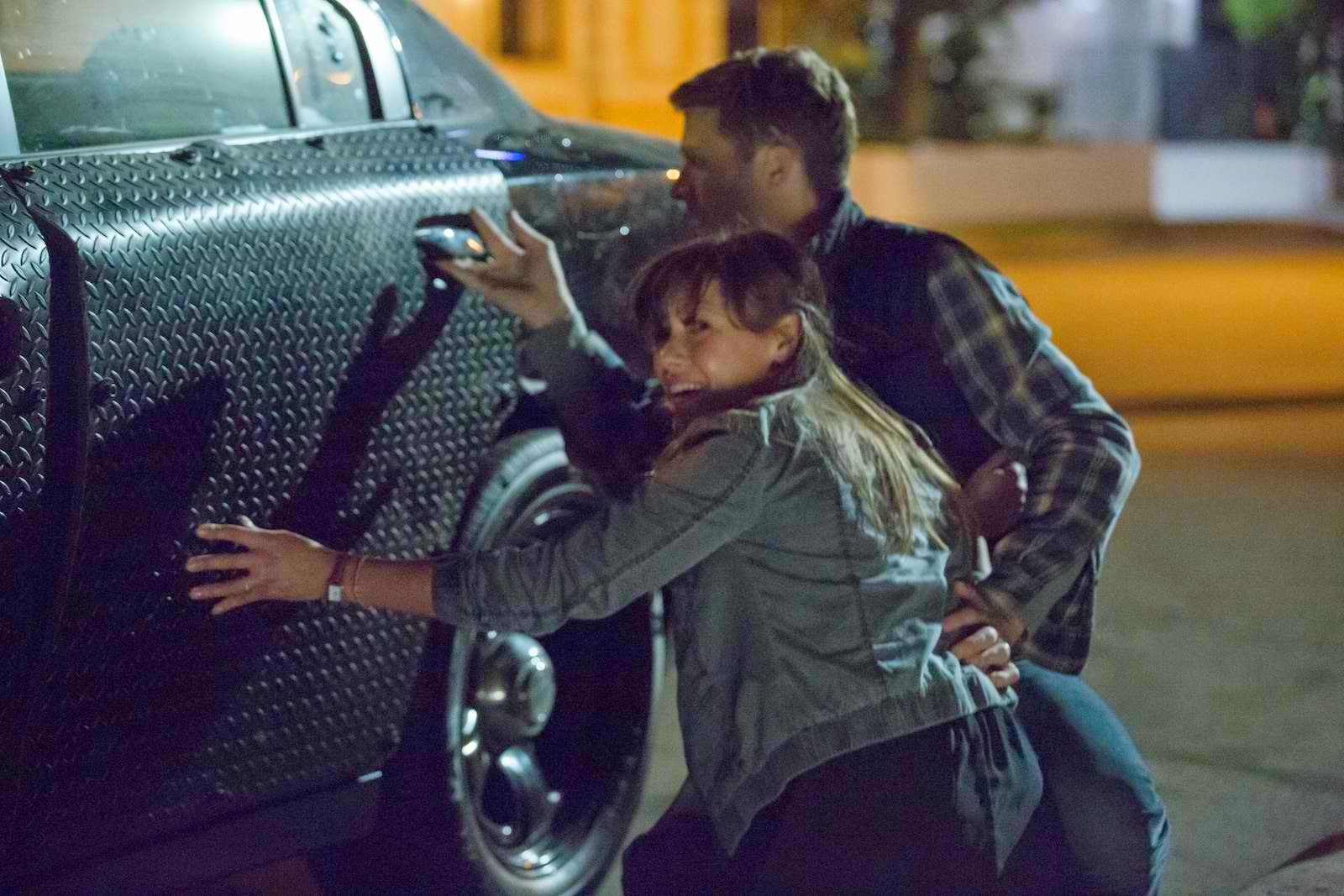In
2013, the world responded to the provocative concept that on one
night every year, any and all crime is made legal. Audiences turned
“The Purge” into a surprise summer hit as the film debuted at No.
1 with an astonishing $34.1 million weekend at the domestic box
office.
After
witnessing the response to the film and listening to the
conversations that it provoked, James Demonaco (writer/director of
“The Purge”) quickly returned to the explosive universe that he
created with an even more arresting idea for a sequel: placing the
audience outside on the streets during the annual Purge.
A
speculative thriller that shows us what occurs during The Purge
outside of the confines of a suburban neighborhood, Universal
Pictures' “The Purge: Anarchy” returns us to a dystopic future.
America's government, now re-engineered by the New Founders of
America (NFA), has sanctioned its annual 12-hour Purge to ensure that
the crime rate stays below one percent for the rest of the year.
With police and hospitals suspending help, it’s one night when the
citizenry regulates itself without thought of punishment or fear of
retribution.
It’s
time to take to the streets for anarchy.
As
evidenced by the success of “The Purge,” audiences were
fascinated with the concept and asked themselves, “What if this
happened in my neighborhood?” Still, for writer/director James
DeMonaco and producer Sébastien K. Lemercier, the thriller was
originally intended to be a smaller film that served as a commentary
on society.
DeMonaco
was as surprised as anyone that the concept was so universal. He
offers: “Sébastien and I first thought it would be a politically
subversive indie that would play in small art houses in Los Angeles
and New York. To me, the family in the first film isn’t
particularly noble, which is not normal for a Hollywood film. We
fashioned `The Purge' to be a morality play about this one family’s
comeuppance and the lessons they learn about violence, money and
class. It was built to be more provocative than commercial, but now
it’s both.”
Truly,
DeMonaco is the first to admit that he wants his films not only to
entertain, but to start a conversation. He reflects: “With this
series, I’m hoping to reflect something in American society about
how we look at violence. It’s very different than other places in
the world. We’ve found that audiences leave the theater talking
about our relationship with violence as a society.”
The
filmmaker felt that if he were to return to this place and time for a
follow-up, he could further expand the concept and show moviegoers
what was happening in the world that he imagined—one that existed
outside of the first thriller’s suburban enclave. He shares: “We
always said if we were lucky enough to do part two, we would want to
show what’s happening on the streets in one of the biggest cities
in America. We envisioned opening it up, because we felt the
audience wanted to see more than what we gave them in the first
film.”
For
“The Purge: Anarchy,” DeMonaco expands the canvas, showing
audiences what it’s like to step outside and experience The Purge
from the viewpoint of lower-class citizens who don’t have the
luxury of intricate security systems to protect themselves. DeMonaco
delves into the idea behind The Purge: “Behind it all, behind what
the government is selling you of getting you to exorcise your
aggression—telling you that it makes you a better citizen—is a
ruse. The Purge really doesn’t do that; the government has another
objective.”
In
DeMonaco’s second chapter, the NFA is still touting The Purge as
beneficial to all citizens, with the ratification of the 28th
Amendment allowing every American his or her right to exorcise demons
on this lawless night. However, the underground rumblings that the
NFA has long sought to quash have metastasized and threaten to
explode into a full-blown revolution. The NFA’s ironclad rule is
met with increasing resistance as more citizens question The Purge’s
rationale.
For
the next chapter, the filmmakers agreed that the only way to give
audiences what they wanted was to expand the world outside the
confines of one home. Producer Andrew Form concludes: “We knew we
wanted to live in the world of an urban environment where a group is
caught out there, where the audience gets to witness all the twists
and turns that happen on Purge night, why people are out there
purging, why people are caught in the open, and keep the audience
guessing the entire way. James has completely achieved that with
this project.”
Opening
across the Philippines on August 27, 2014, “The Purge: Anarchy″
is distributed by United International Pictures through Columbia
Pictures.

No comments:
Post a Comment